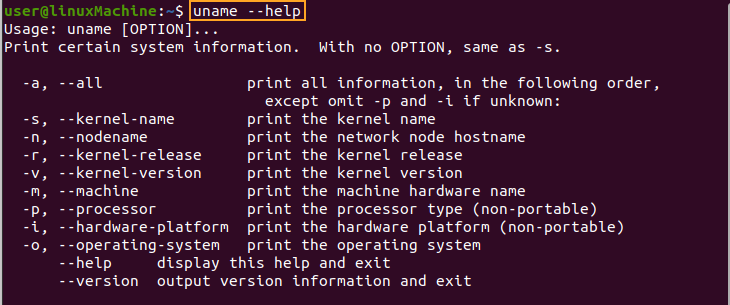Linux uname Command tutorial
Uname is a short form of Unix name. This is a very useful command in Linux, which provides hardware and software information in the current running system.
This short manual will show you how to get all system information through the Uname command.
Syntax:
Options:
There are several ways to filter out the details you want.
1. -a option:
Use -a option with uname command to display all possible information about your current running system.
2. -s option:
We can use the –s option to display currently using kernel name and information.

3. –v option:
The–v option prints the Kernel version on the command line:

4. –r option:
Use –r option to display the kernel release details.

5. –m option:
Use –m option to see the currently running machine hardware name.

If the output value is x86 64, it means that you are using the 64-bit operating system. Moreover, the i686 value refers to the 32-bit operating system.
6. –n option:
The –n parameter with the uname command is used to display the network node hostname.

7. -p option:
Use –p parameter with uname; it will give current processor information.

8. –i option:
The –i option gets the current hardware system information and prints it on the command-line:

9. –o option:
The –o option with the uname command is used to print the operating system name.

10. –version option:
Use –version parameter with uname to get uname version details as follows:

11. Help option:
The –help shows us all possible commands and their usage.

Conclusion:
The uname command is a very efficient command through which we can get all possible information about the operating system, hardware, kernel, and processor information. To figure out why a piece of software is not performing as expected, you’ll need to know the kernel version, operating system, and basic hardware details.
